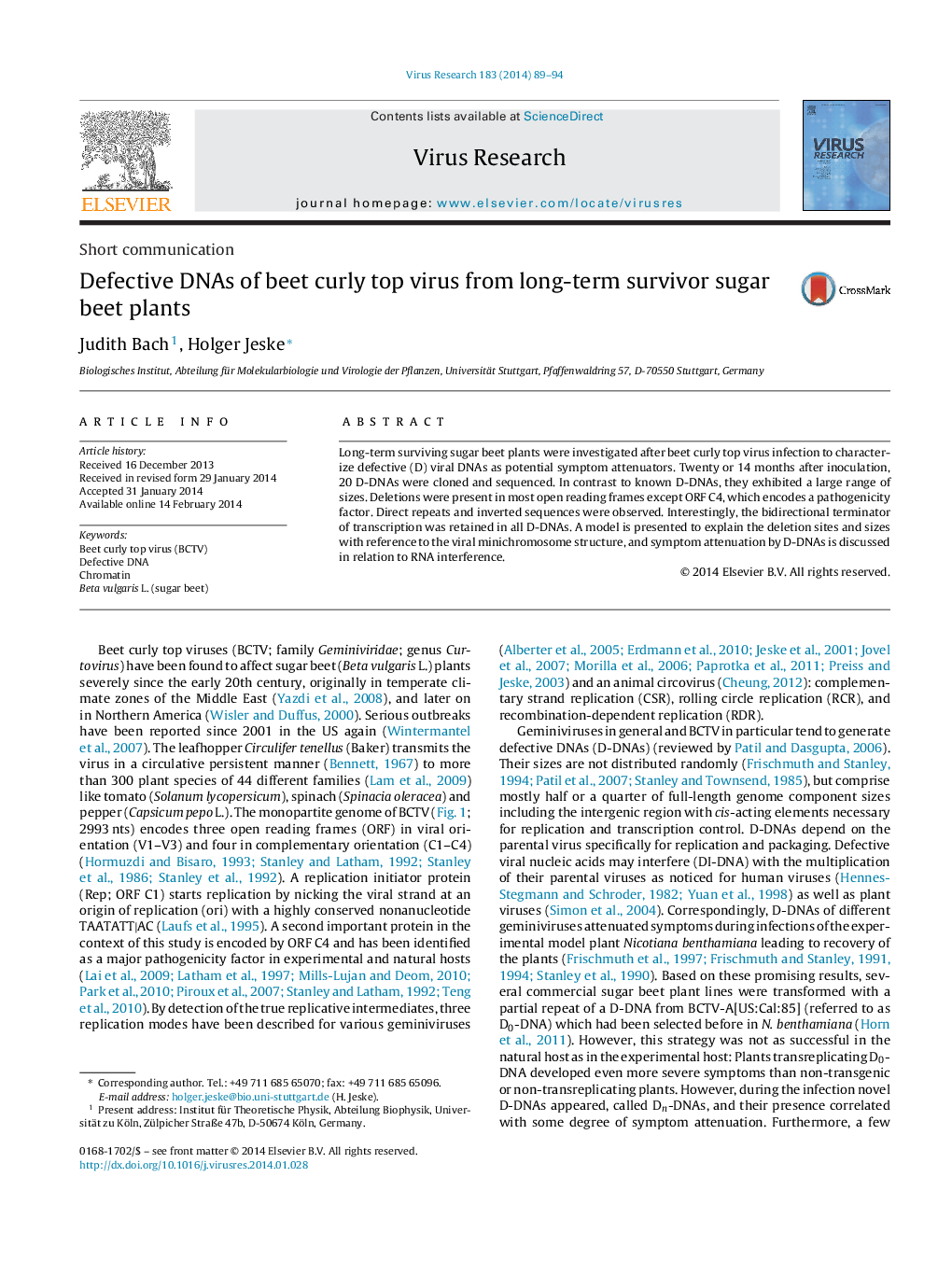| کد مقاله | کد نشریه | سال انتشار | مقاله انگلیسی | نسخه تمام متن |
|---|---|---|---|---|
| 3428492 | 1594374 | 2014 | 6 صفحه PDF | دانلود رایگان |

• First description of defective DNAs in long-term survivor sugar beet plants.
• Complexity of D-DNAs concerning recombination, deletion and size.
• Model for D-DNA formation on the basis of chromatin structure.
• Novel candidate trigger molecules adapted to sugar beet for transgenic resistance.
Long-term surviving sugar beet plants were investigated after beet curly top virus infection to characterize defective (D) viral DNAs as potential symptom attenuators. Twenty or 14 months after inoculation, 20 D-DNAs were cloned and sequenced. In contrast to known D-DNAs, they exhibited a large range of sizes. Deletions were present in most open reading frames except ORF C4, which encodes a pathogenicity factor. Direct repeats and inverted sequences were observed. Interestingly, the bidirectional terminator of transcription was retained in all D-DNAs. A model is presented to explain the deletion sites and sizes with reference to the viral minichromosome structure, and symptom attenuation by D-DNAs is discussed in relation to RNA interference.
Journal: Virus Research - Volume 183, 21 April 2014, Pages 89–94